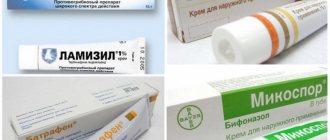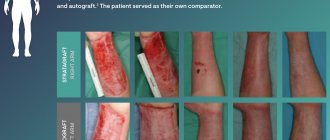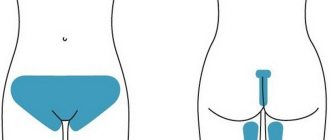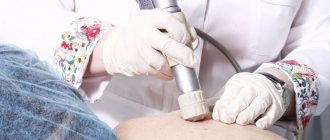In what cases may the bone fail to take root?
The bone may not take root in cases where it becomes infected, including when the patient violated the schedule for taking antibiotics or did not follow the doctor’s orders.
Much attention is paid to food intake: the patient can simply, out of forgetfulness, bite into something hard, and his stitches will come apart, and the material and bone graft will become infected through the open wound.
The above accounts for 90 percent of cases
when the bone may not take root.
Are there any contraindications to bone grafting?
Of course, there are contraindications to bone grafting. These include
:
- various chronic diseases, incl. diabetes mellitus with high sugar levels,
- the period when the patient takes a number of drugs, including chemotherapy,
- in the period after chemotherapy, when the bone cannot be “touched” at all.
Features of hygiene after bone grafting
After bone grafting it is recommended
:
- use of special surgical toothbrushes,
- the use of toothpaste should be limited, and even better, use special toothpastes for post-surgical interventions,
The main thing when carrying out hygiene is NOT TO INJURY
area of bone grafting! You should try to eliminate contact with this area or reduce it to a minimum.
When can you do without bone grafting?
You can always do without bone grafting when you can install an implant of the required diameter and required length into the remaining bone.
And, in fact, you shouldn’t do bone grafting just to assert yourself. Some doctors suffer from this, trying to prove to themselves or someone else how they can do bone grafting.
But, as they say, the best bone grafting is the one we don’t do: if the patient can be rehabilitated without bone grafting, then it’s better to do just that. Since volume can be added with soft tissues, connective tissue can be transplanted - a graft, or drugs can be added to replace the volume of soft tissues - and achieve an excellent result!
Clinical case No. 4
The same protocol for directed bone regeneration in a separate stage. The creation of the PCD zone and subsequently NTR using SST is carried out after implantation.
The conditions for achieving success are:
- Qualitative translation of SDT into SST. Careful removal of the epithelium, since the presence of pieces of epithelium on the SCT will, at best, complicate the healing process.
- Achieving immobility of the graft in the recipient area, which makes it possible to receive adequate nutrition.
- Correct position of the implants. The proximity of implants to each other may not allow the creation of the required volume of soft tissue. The buccal inclination of the implant and/or the buccal position worsens the aesthetic prognosis of the future restoration, also from the soft tissue side.
What implants are used after bone grafting?
Are there “special implants” that are recommended in cases of bone grafting? Both with bone grafting and without bone grafting, it is necessary to use implants only from good, proven manufacturers, those that have a good clinical base. For example – Straumann, Nobel, Ankylos, Xive, Astra Tech.
There are a number of other implant systems that give good results. But at the German Implant Center we use only the best implant systems, only premium ones.
Complications when working with soft tissues
When taking SST or SDT:
- loss of material (the assistant may accidentally aspirate the graft, which entails an increase in the donor zone, or there is a need for another zone);
- taking the wrong volume of material (if there is not enough, it will be necessary to add it in a separate fragment, which complicates the process of fixing the grafts and increases the duration of the operation);
- bleeding in the immediate or delayed time after taking the graft from the palate (increased healing time, discomfort for the patient).
Particular attention should be paid to the technique of collecting SDT and SST, and the technique of suturing on the palate, to ensure comfortable healing and the absence of significant discomfort for the patient during the period of regeneration of the donor area.
In preparation:
- insufficient cleansing of epithelium;
- perforation or injury to the flap;
- drying of the graft (humidity throughout the operation ensures the viability of the graft).
When fixing:
- too much suture material (impairs blood supply and injures the graft, complicates vascularization);
- poor adaptation (healing = immobility, this is an important rule that largely determines success).
How is implantation performed during bone grafting?
Implantation during bone grafting can be carried out either simultaneously with bone grafting, or delayed - when the implants are installed in the new “grown” bone.
As an experienced implant surgeon, in my practice, in 80-90 percent of cases I perform bone grafting at the same time
with implantation.
I will explain why I perform plastic surgery with implantation at the same time, and what is the advantage of this approach. Bone grafting itself requires a long healing period, from 4 to 9 months. And if we maintain this period and then do implantation, then we have to wait another 4 months. That is, the time frame in this case increases significantly.
And if I do implantation along with bone grafting, then the implant takes root along with the bone. A good implant has an excellent osteogenerating surface, and when fused, an excellent result
.
This reduces the patient’s rehabilitation time. And most importantly, the patient DOES NOT NEED
second surgery. We understand that a large number of surgical interventions do not improve trophism, mucous membranes, or bone tissue.
Everything we do at the German Implant Center, from tooth extraction to implantation, is carried out as atraumatically as possible for the patient.
How many implants are placed during a total restoration?
We specialize very broadly in total implant rehabilitation. In the upper jaw, 6-8 implants are recommended according to our protocol; in the lower jaw, 6 implants are sufficient for total rehabilitation.
Often, implantation occurs simultaneously with the installation of temporary teeth, that is, the patient leaves the clinic “with teeth”, and not on the second or third day, but on the same day when implantation is done:
Preliminary implantation planning is carried out using CBCT, the implants are placed in the required positions.
After this, a surgical template is made, according to which the implants are installed. And based on the same computed tomography (CBCT) and images, a temporary structure is made that will be attached to the implants installed for the patient.
And it turns out the so-called “full case” is when the patient comes, if necessary, if circumstances require it, teeth are removed (or they have already been removed/lost earlier), implants are placed on the patient and an orthopedic structure is fixed - his new teeth.
Advantages of our center for modern dentistry:
Why you should contact Uniklinik Center for Modern Medicine LLC in Moscow:
- Our clinic employs doctors of medical sciences, professors, and dentists who regularly take advanced training courses in Russia and European countries.
- For 15 years we have been providing dental services of very high quality.
- The clinic has a computed tomograph, a cephalostat, a digital modeling system, and a dental microscope.
- We use modern treatment methods - invasive bone surgery, immediate implantation, tooth extraction, periodontal surgery, all types of prosthetics and orthodontic treatment.
Thanks to such a thorough and comprehensive approach to each patient, and coordinated work in a team of highly qualified doctors, for many years we have been obtaining very highly aesthetic and functional work, which our patients enjoy with great joy.
On which jaw does tooth bone resorption occur faster?
How quickly does a deficiency of bone and bone tissue occur in the absence of a tooth?
In fact, tooth bone tissue decreases faster in the upper jaw, since the upper jaw is softer and more porous. In the lower jaw, the bone also disappears quite quickly, since the vestibular plate near the teeth is quite thin. Six months after tooth loss, quite severe atrophy of bone tissue occurs, and the atrophy progresses. And therefore, in order to avoid atrophy, it is advisable to do implantation simultaneously immediately after tooth extraction.
This format is the regular, daily work of the specialists of the German Implantology Center. For example, a patient comes with a crack in the root of a tooth - the tooth must be removed. We can go with two options:
Option 1.
We can remove the tooth and 3 months later implant the tooth into the patient.
But during these three months, shrinkage of the bone tissue still occurs, since - I said earlier - the vestibular bone plate is very thin. And in this case, the patient undergoes 2 surgical interventions
: the first is tooth extraction, the second surgical intervention is the installation of a dental implant.
Option 2.
In our practice, we recommend and practice the second option. This is a one-step implantation, when the patient has a tooth removed, an implant is installed, and in order to avoid collapse of the bone tissue in the places where the roots of the tooth used to be, these places are filled with a bone graft. Due to graft filling, we do not have tissue “collapse”; the contour of both the gums and the jaw bone tissue is preserved. Which, in turn, is very difficult to achieve with delayed, delayed implantation.
Who can undergo bone grafting?
Who are potential patients for bone grafting, and what are the age restrictions for it?
This is a bit of a tricky question :). The oldest patient I have performed bone grafting on is a 75-year-old patient, a wonderful, purposeful woman. She had bilateral terminal defects on her lower jaw. She really wanted implantation and refused a removable structure.
I performed bone grafting on this woman at the same time as implantation. And literally 6 months later she was fitted with prosthetics. And everything went great.
In the case of the patient’s age, the main thing is that he has no contraindications. Perhaps there are age restrictions, but they are not so pronounced, because, although trophism deteriorates with age, regenerative abilities decrease, but the main thing is the presence of contraindications. You need to look at the tests, and if the patient is healthy at 75 years old, then why not?
Clinical case No. 1
Simple implantation for long-term missing teeth. An implant is installed, GTR (guided tissue regeneration) is carried out using a SST (connective tissue graft), and a FDM (gingival cuff former) is installed. After 3-4 months you can begin prosthetics.
How to do without bone grafting
Is it possible to do without bone grafting and sinus lift?
Yes, in some cases you can do without bone grafting. But you need to understand that if the patient does not have bone tissue, and we install an implant, the crown will hang over the gum, and something from food will constantly get clogged there. That is, it is aesthetically unsightly, and all the food will be stuffed there, the patient will always have a “pocket of food supplies” from yesterday and the day before yesterday.
Option with a smaller diameter implant
You can place an implant of a smaller diameter, and at the same time we can carry out soft tissue regeneration - replant the mucous membrane (this can be connective tissue from the palate, from the tubercle of the upper jaw). And thus we achieve replenishment of the volume of soft tissues. Due to this, aesthetics are visually improved and hygiene problems are eliminated.
Whenever it is possible to avoid various surgical procedures, but not at the expense of quality, then they should be avoided.
That is, surgery for the sake of surgery - it is not needed
.
Clinical case No. 2
Plastic surgery using SST in 2 stages (after implantation, and during installation of FDM), to compensate for a greater soft tissue deficit than in case No. 1.
Recovery period:
Mentoplasty is a low-traumatic operation, but requires care in the postoperative period. During augmentation surgery, it is important to allow a pocket to form that will tightly hold the implant. Therefore, the pressure bandage must be worn for about three weeks. At this time you need to sleep on your back, limit facial movements, and do not go to the sauna. Within three days, the patient may experience pain, especially when chewing, notice hematomas and swelling, which will then go away on their own. If stitches are applied, they are usually removed within 7-10 days. If access was made through the oral mucosa, you need to follow a diet - do not eat hot, very cold, spicy, and in any case avoid solid foods.
Laser gingivoplasty
Laser correction of gum contour has been successfully used by dentists for a long time! The main advantage of this method is painlessness and accelerated healing. During the operation, the laser immediately seals the vessels whose integrity has been compromised. Thanks to this, there is no bleeding during manipulation. After laser gingivoplasty, healing occurs within a few weeks and in the vast majority of cases it is completely painless.
How much does it cost?
For 10 or even 20 thousand rubles, not a single dentist will provide the entire range of services listed above. Therefore, if you still decide to respond to a promotion, special offer or just a low price, be sure to clarify what is included in the specified price.
As Arthur Avetisyan comments, on average the price of implantation from the first to the last stage is at least 80 thousand rubles. The patient is unable to influence some cost items. For example, this applies to the installation stage of the implant itself. But the client can easily adjust some points to suit himself. Let's say we choose a less expensive material for the crown.
Kinds
Osteoplasty is classified based on the material that is used to restore the volume of a “sagging” jaw. It happens:
- Autogenous. This means that the patient’s bone is used during treatment. The option is considered the most effective, since the risk of rejection is minimal. However, it is more complex and traumatic than the others - after all, you need to get a sample from somewhere, and this is another operation.
- Allogeneic. The client is provided with material that was taken from a person who bequeathed his organs to achieve various medical purposes. The workpiece is selected very carefully, sterilized, and processed using special technology. Over time, it successfully takes root, thanks to which the dentition can already be used for implantation.
- Xenogenic. The difference from the previous solution is that tissue is taken not from a deceased person, but from an animal (most often from cattle). Cow bones are processed, sterilized, and prepared using innovative technology. As a result, they become compatible with the tissues of the human body. Experience shows that such structures take root well.
- Alloplastic. Involves the use of a synthetic sample. Alloplasty is a new word in the field of implantology. The doctor fixes materials into the jaw, which over time turn into a frame or completely dissolve. After their installation, active independent bone regeneration occurs.











